1 Anatomical Terminology
Sections
The Anatomical Position

Whenever anatomists describe directions and positions of body parts, we refer to the body in the anatomical position. In this position, the body is erect, with the feet together and the toes pointing straight ahead. The arms hang at the sides with palms facing forward and the thumbs pointing away from the body. This is not the position where your arms hang naturally (try it), but it gives a common frame of reference for describing the locations and positions of structures in the body. All anatomical descriptions of the body during this course will assume that the body is in the anatomical position.
Directional Terms
As you learn to identify individual structures, it is important to be aware of their positions relative to other structures. The following terms are used commonly when describing relative position.
Anterior (Ventral) / Posterior (Dorsal)
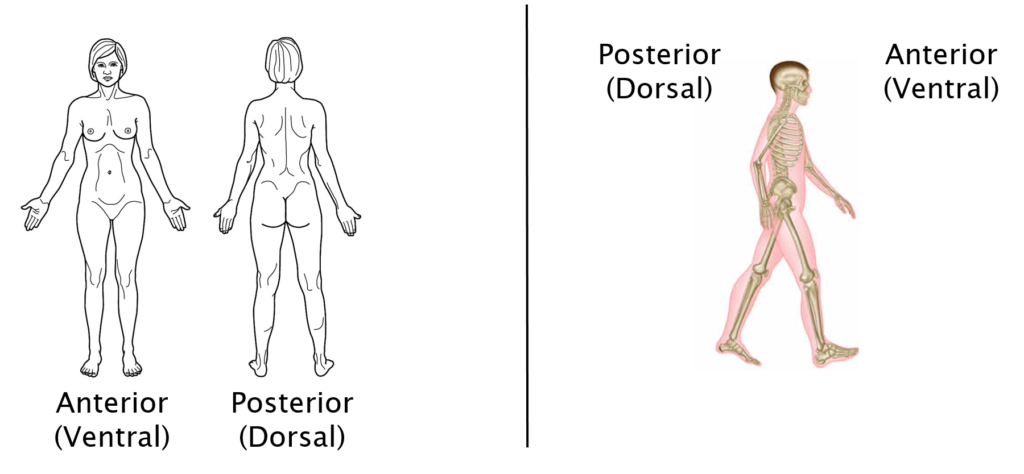
- Anterior (or Ventral) = toward, or closer to, the front surface of the body
- Posterior (or Dorsal) = toward, or closer to, the back of the body
- Example: The sternum is anterior (ventral) to the spine. The spine is posterior (dorsal) to the umbilicus.
Superior / Inferior & Cranial / Caudal
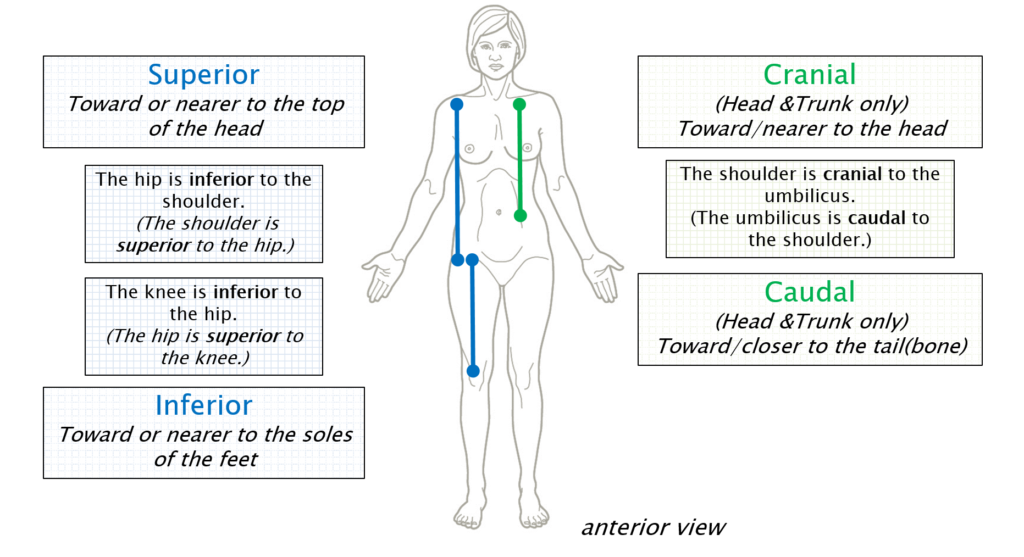
The terms superior and inferior are used to describe structures throughout the body:
- Superior = toward, or closer to, the top of the head
- Inferior = toward, or closer to, the soles of the feet
- Example: The eyes are superior to the nose. The mouth is inferior to the nose.
The terms cranial and caudal are used only to describe structures of the head and trunk, not the limbs.
- Cranial = toward, or closer to, the top of the head
- Caudal = toward, or closer to, the inferior-most part of the trunk (the lowest vertebra)
- Example: The eyes are cranial to the nose. The umbilicus is caudal to the shoulder.
Lateral / Medial & Proximal / Distal
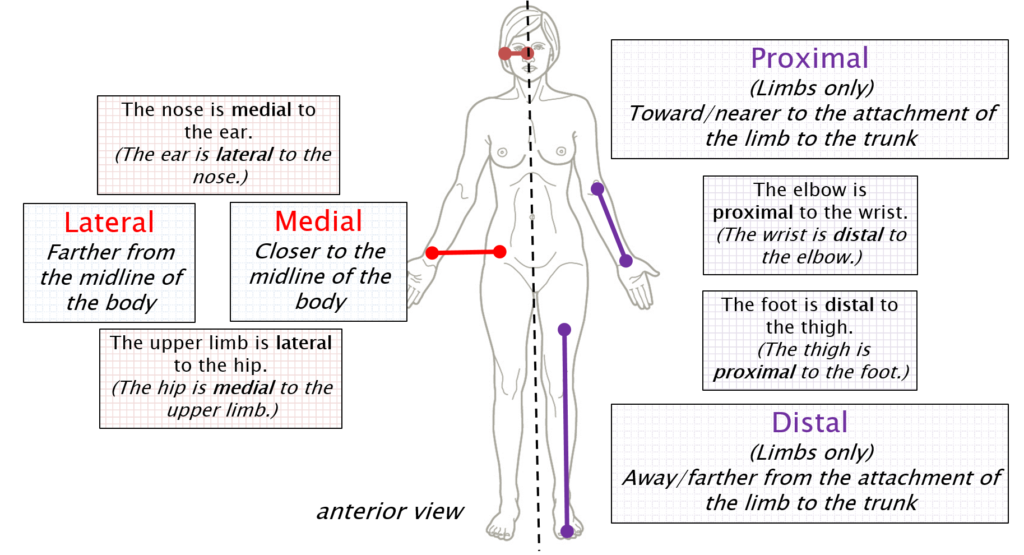
The terms medial and lateral are used to describe structures throughout the body.
- Medial = closer to the midline of the body
- Lateral = farther from the midline of the body
- Example: The nose is medial to the ears. The ears are lateral to the eyes.
The terms proximal and distal are used only to describe structures on the limbs.
- Proximal = toward, or closer to, the attachment of an extremity to the trunk
- Distal = away, or farther, from the attachment of an extremity to the trunk
- Example: The thigh is proximal to the knee. The foot is distal to the knee.
Deep (Internal) / Superficial (External)
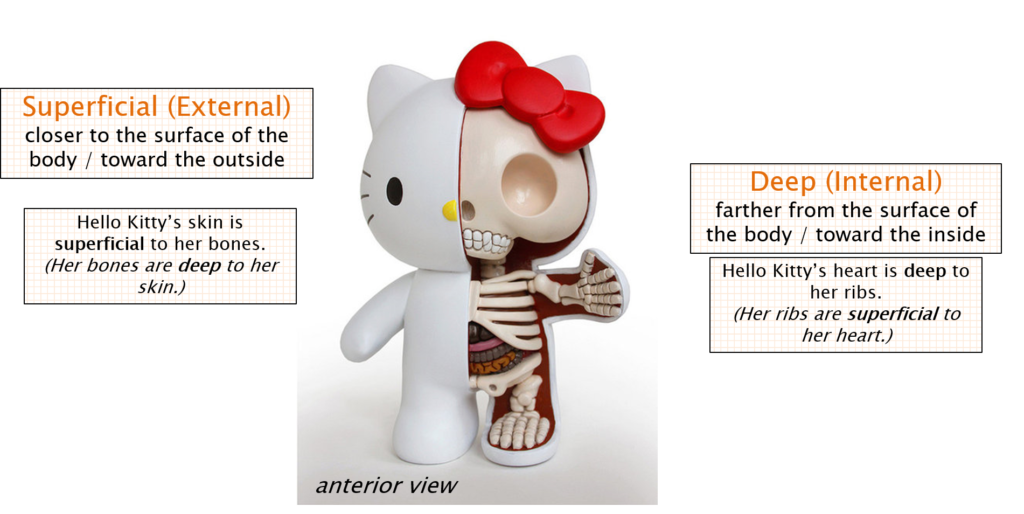
- Deep (or Internal) = away from the surface of the body; toward the inside
- Superficial (or External) = close to the surface of the body; toward the outside
- Example: The heart is deep to the sternum. The skin is superficial to the muscles.
Anatomical Planes and Axes
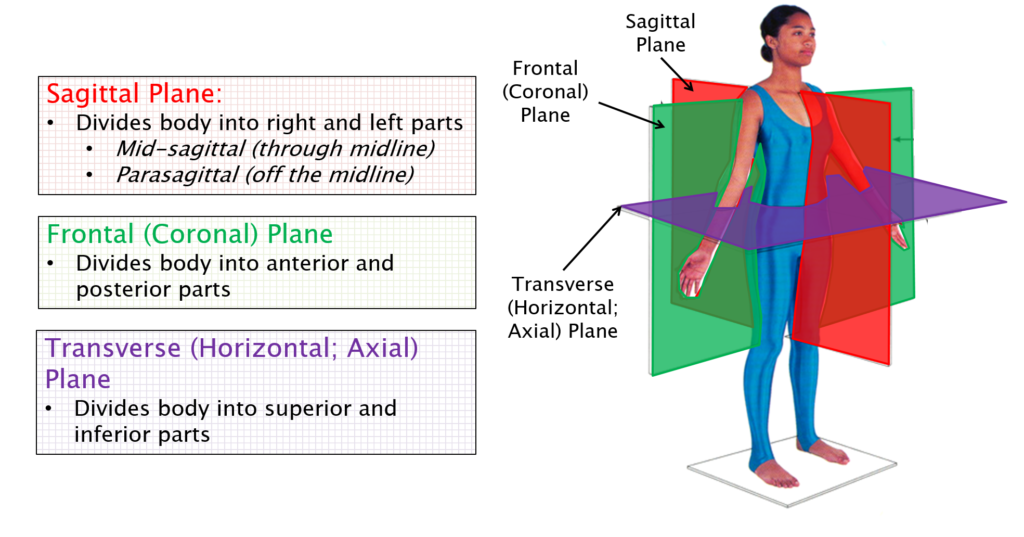
In the study of anatomy and in radiology, it is often useful to imagine the body cut in various planes of section.
- Sagittal Plane: This is a vertical plane that divides the body into right and left portions.
- Mid-sagittal planes go through the midline.
- Parasagittal planes are lateral to the midline.
- Transverse (Horizontal; Axial) Plane: This is a plane that divides the body into superior and inferior portions.
- Frontal (Coronal) Plane: This is a vertical plane that divides the body into posterior (dorsal) and anterior (ventral) portions.
Knowledge Checks

